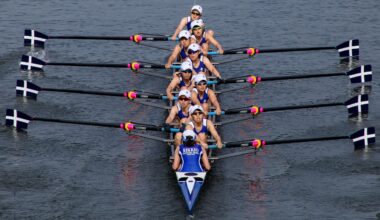Tailoring Rehabilitation for Athletes Returning to Sport
Returning to sport after surgery is a complex process that necessitates a carefully tailored rehabilitation program. Athletes face unique challenges during recovery; hence rehabilitation must consider not just the physical healing but also psychological barriers to overcome. Effective rehabilitation should begin with a comprehensive assessment to identify specific needs. This assessment should include:
- Physical evaluation of strength and mobility.
- Understanding the nature of the sport and injury.
- Setting realistic goals for performance and timeline.
From this foundation, rehabilitation can address specific weaknesses while building confidence. The involvement of a multidisciplinary team including physiotherapists, strength coaches, and mental health professionals can also ensure comprehensive care. Protocols that exceed conventional standards may involve progressive loading or sport-specific drills earlier in recovery. Communication is crucial, allowing athletes to articulate their progress and setbacks effectively. A focus on monitoring and adjusting the rehabilitation strategy helps athletes regain not only physical prowess but also self-assurance, enabling a successful return to competitive environments. Each athlete’s psychology plays a pivotal role, making mental preparation equally important during this challenging journey.
Importance of Customization in Rehabilitation
Each athlete is unique, as are their responses to surgical rehabilitation. Customization is essential, as no two injuries or recovery processes are the same. An individualized rehabilitation program tailors exercises and modalities to fit the specific sport and injury type. Programs may incorporate various components, including:
- Progressive resistance training tailored to the healing tissues.
- Therapeutic modalities like ultrasound or electrical stimulation.
- Functional tasks reflecting sport demands.
Customization also requires flexibility. As athletes progress, their rehabilitation needs will change; hence, program adjustments should reflect these changes to optimize recovery. Research suggests that personalized rehabilitation can lead to improved outcomes, enabling athletes to resume their sporting activities safely and efficiently. Additionally, acknowledging the psychological aspects is fundamental. Many athletes may experience anxiety about re-injury. Hence, incorporating mental strategies, such as visualization and goal setting, can foster resilience. Regular check-ins with health professionals ensure athletes remain hopeful and focused on their goals, allowing for a smoother transition back into their desired sport. Therefore, tailored plans must adapt to evolving needs while supporting both physical and psychological healing.
Physical rehabilitation should ideally commence promptly post-surgery, initiating with conservative motions that minimize aggravation. It may include gentle range-of-motion exercises to restore mobility and prevent stiffness. The incorporation of pain management techniques like ice, compression, and elevation can also facilitate early recovery. Gradually, the intensity of exercises can be enhanced as the patient tolerates and responds positively. Building on basic motion, rehabilitation can incorporate strength training as appropriate. For instance, introducing isometric exercises can help re-establish muscle activation without excessive strain. Progressing to isotonic movements will promote coordinated muscle function. Structured agility and balance exercises mimic the athlete’s sport dynamics. Importantly, rehabilitation should not just be about physical drills but also about addressing any fear of injury. Psychosocial support from coaches or sports psychologists can equip athletes with coping strategies to combat anxiety. Clear communication about recovery timelines provides transparency, essential for an athlete’s mental peace. Involving athletes in their rehabilitation program encourages ownership over recovery. This engagement can help instill a strong commitment towards the rigorous process ahead, ultimately fostering a mindset conducive to effective rehabilitation goals.
Another critical aspect of rehabilitation is the role of sport-specific training. It is vital for athletes to engage in activities that closely resemble their sport to prepare adequately for competition. This approach, known as functional rehabilitation, emphasizes the use of specific skills in recovery. For instance, a basketball player may focus on lateral movements, jumps, or specific shooting techniques once physical readiness is achieved. A thorough analysis of the athlete’s biomechanics will help tailor exercises:
- Practicing specific movements under supervision.
- Incorporating drills that closely replicate in-game situations.
Such targeted training ensures the athlete reinstates not just health but also performance. Close collaboration with coaches can provide insight into necessary drills that should enhance specific skill sets relevant to the athlete’s sport. This collaboration fosters a seamless transition from rehabilitation to training. In all phases, tracking progress is important. Documenting small achievements can motivate athletes, providing evidence that recovery is progressing positively, bolstering their confidence. Additionally, feedback and encouragement from professionals are indispensable during this phase, inspiring athletes to push boundaries and strive for excellence in performance as they return.
Furthermore, understanding injury prevention strategies is crucial as athletes prepare to re-enter their sport. Rehabilitation programs should inherently incorporate education on avoiding future injuries. This can establish a long-lasting habit of injury prevention as athletes advance. Strategies to impart knowledge could involve:
- Biomechanical assessments to correct faulty movements.
- Teaching specific warm-up and cool-down techniques.
- Emphasizing the importance of flexibility and strength training.
Education during rehabilitation ensures athletes have a toolkit to manage their physical condition post-recovery effectively. By learning self-management, athletes can recognize signs of overexertion or recurrence of injury early. This knowledge allows them to take necessary precautions or adjustments during high-pressure scenarios often found in competitive environments. Educating athletes extends beyond physical aspects, including psychological resilience. Techniques such as mindfulness and stress management can empower athletes to tackle competition without fear. Overall, blending sport-specific methods with injury prevention tactics creates a rounded rehabilitation program that promotes sustainability in athletic careers while minimizing the risk of future setbacks, ultimately fostering a healthier approach to sports participation.
Working closely with healthcare providers establishes a safety net for athletes during recovery. This relationship fosters effective communication between the rehabilitation team and the athlete, ensuring everyone understands the goals and expectations. Athletes should feel comfortable voicing concerns or feedback on their progress. Regular consultations allow for adjustments based on real-time feedback. A reduction in recovery time is typically seen in athletes who stay engaged with their rehabilitation team and maintain open communication. Being an active participant in discussions about progress or setbacks can further enhance performance and mental well-being. Furthermore, periodic evaluations help to gauge the effectiveness of the rehabilitation program, allowing for necessary modifications. A structured re-evaluation process should be fixed into the program, setting points to assess physical readiness. Feedback from both athletes and coaches can stream into refining rehabilitation practices tailored to the sport. Ultimately, fostering a strong bond with health care professionals not only expedites recovery but also inspires confidence and reassurance in athletes. Enhancing dialogue constantly encourages a supportive environment where the athlete feels empowered to take control of their recovery journey.
In conclusion, effective post-surgical rehabilitation for athletes involves a multifaceted approach focused on individual needs. The recovery process combines physical and psychological elements, allowing athletes to return to sport thoroughly prepared. This requires customizing rehabilitation protocols, implementing sport-specific training, and educating athletes about injury prevention and self-management. The involvement of a multidisciplinary team ensures holistic care, ensuring that both physical and mental aspects are monitored throughout rehabilitation. Empirical evidence supports the idea that a structured, supportive environment promotes recovery. Athletes are encouraged to take ownership of their rehab experience, resulting in more successful outcomes. Building resilience through mental strategies can significantly influence performance upon return to competitive sports. Furthermore, consistent communication between the rehabilitation team and the athletes solidifies the recovery framework. All these elements combined nurture not just the athlete’s physical recovery but also their mental preparedness. Comprehensive rehabilitation ultimately paves the way for a smoother transition back into the competitive arena, allowing athletes not only to regain their physical prowess but also to excel under competitive pressures, perfecting their ability to perform once again.


